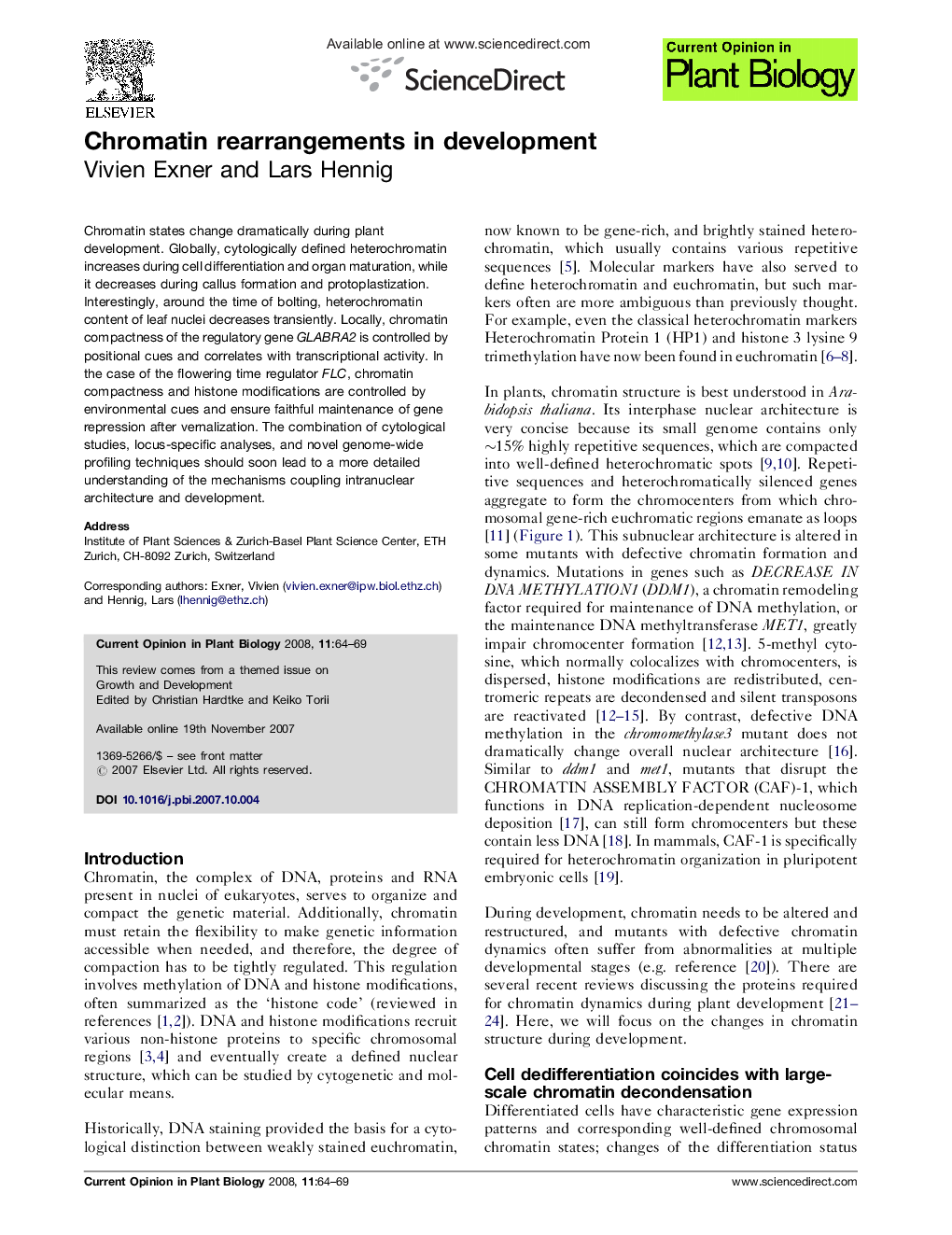| Article ID | Journal | Published Year | Pages | File Type |
|---|---|---|---|---|
| 2046727 | Current Opinion in Plant Biology | 2008 | 6 Pages |
Chromatin states change dramatically during plant development. Globally, cytologically defined heterochromatin increases during cell differentiation and organ maturation, while it decreases during callus formation and protoplastization. Interestingly, around the time of bolting, heterochromatin content of leaf nuclei decreases transiently. Locally, chromatin compactness of the regulatory gene GLABRA2 is controlled by positional cues and correlates with transcriptional activity. In the case of the flowering time regulator FLC, chromatin compactness and histone modifications are controlled by environmental cues and ensure faithful maintenance of gene repression after vernalization. The combination of cytological studies, locus-specific analyses, and novel genome-wide profiling techniques should soon lead to a more detailed understanding of the mechanisms coupling intranuclear architecture and development.
